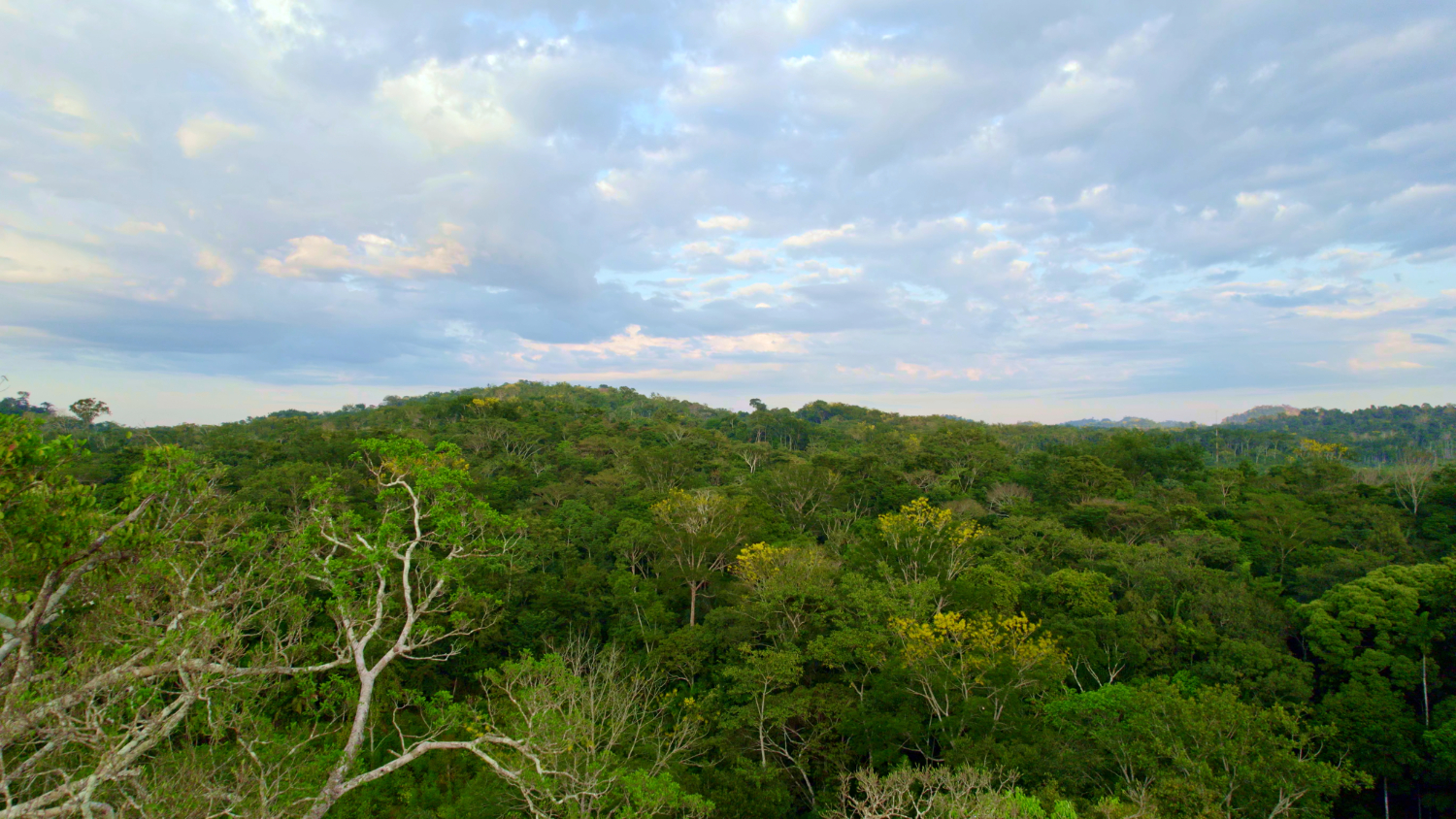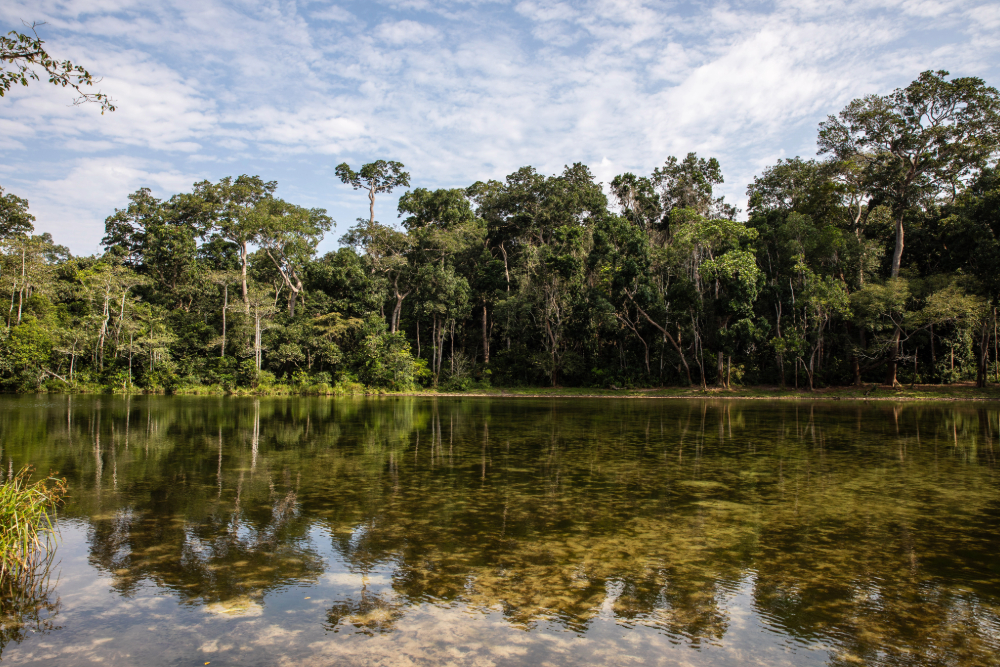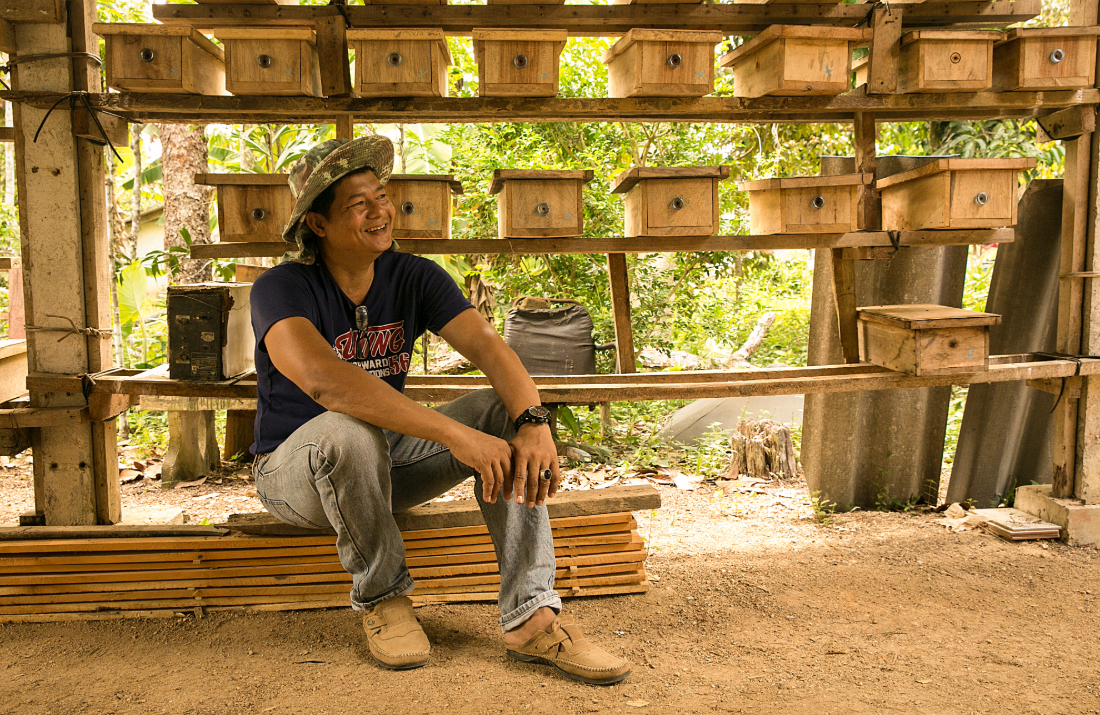What starts as a motion on the GA floor often grows into something much bigger: a lasting part of FSC’s system, embedded in our standards, our governance, and the way we work every day.
Over the years, motions have led to meaningful, permanent changes — protecting critical ecosystems, amplifying Indigenous leadership, and making certification more inclusive. As we approach the next GA in October 2025, we look back at four landmark motions that started as member proposals and have become cornerstones of FSC today.
2014: Protecting Intact Forest Landscapes

FSC forest management standards include several requirements for the protection and management of ecological and/or socially critically important forest areas, known as high conservation value (HCV) forests. One of these HCVs is intact forest landscapes (IFLs). IFLs are large, unfragmented forest areas undisturbed by roads or other significant human infrastructure. They are essential for biodiversity, climate stability, and Indigenous cultures.
The protection of HCV forests is included under principle 9 of the FSC Principles and Criteria (P&C), and as IFLs are a type of HCVs, FSC already had some provisions for responsible forest management on these lands. However, in 2013, members of the FSC environmental chamber pointed out that the world had lost or degraded large areas of IFLs since 2000, and believed that they needed certain protections above and beyond those already in place for HCVs.
At the 2014 FSC General Assembly in Spain, members recognized the need to protect IFLs within FSC-certified forests. Motion 65 (2014) called on standard development groups and certification bodies (CBs) to develop, modify, or strengthen indicators in national and CB standards to protect the vast majority of IFLs. To implement this motion, FSC developed specific International Generic Indicators (IGIs) addressing IFL protection.
Afterward, FSC received feedback from members, stakeholders, and governments. Some raised concerns that the new requirements could harm responsible forest management, especially in the Amazon and Congo Basin. In response, at the 2017 General Assembly, members passed Motion 34 (2017), calling for a review of the economic, environmental, and social impacts of the IFL requirements.
At the 2021–2022 General Assembly in Bali, members passed Motion 23. It supported a new approach that considers local conditions and the wider landscape, beyond just certified forest areas.
Discussion around how to protect IFLs is still ongoing, showing how important and sometimes divisive the issue is within FSC. In March 2025, the FSC Board agreed that it was time to revisit FSC’s role in defining, managing, and protecting IFLs. A discussion paper is being developed to gather input from members and reflect the latest science.
https://fsc.org/en/newscentre/general-news/fsc-members-pass-a-motion-to-ramp-up-landscape-level-conservation-of-intact
To see how members from around the world view the importance of Intact Forest Landscapes, watch this short video from the 2022 General Assembly in Bali. It offers a unique glimpse into the diverse voices and ideas that make FSC what it is today.
2011: Recognizing Ecosystem Services

FSC members have long understood that the value of forests goes far beyond timber. Forests provide critical ecosystem services: storing carbon, regulating water, conserving biodiversity, protecting soils, and offering cultural and recreational benefits that sustain life on Earth.
At the 2011 General Assembly in Malaysia, members decided it was time to reflect these values in FSC’s system. Through Motion 10, they called on FSC to develop ways to evaluate and demonstrate how responsible forest management maintains and enhances ecosystem services. The goal was clear. Forest managers should be able to showcase these benefits and access recognition and incentives for their efforts.
Following this mandate, FSC worked with certificate holders to research, test, and develop a practical framework. This work culminated in the publication of the Ecosystem Services Procedure in 2018, which enables forest managers to measure, verify, and communicate the positive impacts of their management on ecosystem services. By applying the procedure, certificate holders can make credible, verified claims about the additional benefits their forests deliver. This opens the door to new markets and support. At the 2021-2022 General Assembly, FSC’s members passed motions to expand the scope of FSC’s Ecosystem Services solutions, and improve access to incentives and benefits for protecting High Conservation Values (HCVs). This includes revising the Ecosystem Services Procedure to maximise its potential (Motion 48/2021), expanding its scope to enter climate and nature markets (Motion 49/2021), as well as expanding it to recognise cultural services and practices from Indigenous peoples (Motion 53/2021).
Today, this vision continues under the name Verified Impact, which builds on the foundations of the Ecosystem Services Procedure. Verified Impact strengthens FSC’s ability to demonstrate and reward the diverse contributions that responsibly managed forests make to people and the planet. It connects forest managers with businesses, investors, and others who want to support and promote these measurable outcomes. To see where Verified Impact is today, you can visit this page
2011: Embedding Indigenous Leadership in FSC

The FSC General Assembly has long been a forum where members bring forward bold ideas to strengthen the system and advance justice.
In 2011, members acknowledged that the knowledge, rights, and leadership of Indigenous Peoples are indispensable to the future of forests — and that these voices must be embedded at the heart of FSC’s decision-making. Through Motion 19, they called for the establishment of a permanent body to represent Indigenous Peoples within FSC. This decision led to the creation of the Permanent Indigenous Peoples’ Committee (PIPC) in 2013, ensuring that Indigenous perspectives inform FSC’s governance, policies, and standards at every level.
In the years since, members have deepened this commitment through additional motions that focused on indigenous peoples’ empowerment within certified forestry – including the rights of Indigenous Peoples into the FSC statutes as well as adapting certification to the realities of indigenous communities.
In 2017, they strengthened Free, Prior and Informed Consent (FPIC) to ensure it was achieved as a mutually agreed process (Motion 40 / 2017). Another motion (Motion 71) introduced the concept of ‘Indigenous Cultural Landscapes’ - areas that are important to Indigenous Peoples, for instance due to their lasting connection to the land, water, or nature – into the FSC System.
These actions have made Indigenous leadership a defining feature of FSC’s governance. Today, through the PIPC, the FSC Indigenous Foundation, and through the engagement of different Indigenous groups within the FSC membership, Indigenous Peoples continue to shape FSC’s vision; ensuring that forests are managed in ways that respect their cultures, rights, and knowledge.
2014: Opening Doors for Smallholders

For millions of smallholders, including family farmers, community forests and cooperatives, forests are both livelihood and legacy. Yet for many, FSC certification seemed out of reach. Barriers such as cost, administrative complexity and rigid requirements often excluded these small-scale forest owners and communities, despite their critical role in responsible forest management.
At the 2014 General Assembly, members recognized this challenge and passed a number of motions to support smallholders. They called for a detailed and comprehensive review of the FSC certification system to adapt to small forests throughout the world. This laid the groundwork for the New Approaches Initiative to Smallholder Certification. The initiative was launched in 2016 and was later consolidated into a full-fledged program known as the Community and Family Forests (CFF) program which provides a toolbox that eases obtaining FSC-certification and provides benefits for these constituents.
In 2017, members took this commitment further with Motion 46, famously known as the super motion because it merged six motions into one. It prioritized the New Approaches Program and specifically requested the development of innovative solutions to reduce barriers. Its goal was to make FSC certification more accessible for smallholders and community forests.
Since then, FSC has tested and launched a variety of policy and market tools. These have helped more of these vital stewards of the forest participate in and benefit from FSC certification. Their voices and contributions remain central to our mission.
The FSC Global Strategy 2021-2026 reinforces this commitment by pledging to increase the area of forests managed by small-scale, low-intensity and community forestry operations. This is reflected in Goal 2.4 of the strategy, which focuses on strengthening support for Indigenous Peoples, communities, smallholders and workers. Today, around 680 smallholders are FSC certified worldwide, covering roughly 14 million hectares. They are supported by a suite of tools designed to simplify certification and make it more accessible. Explore the offerings available for communities and family forests here

